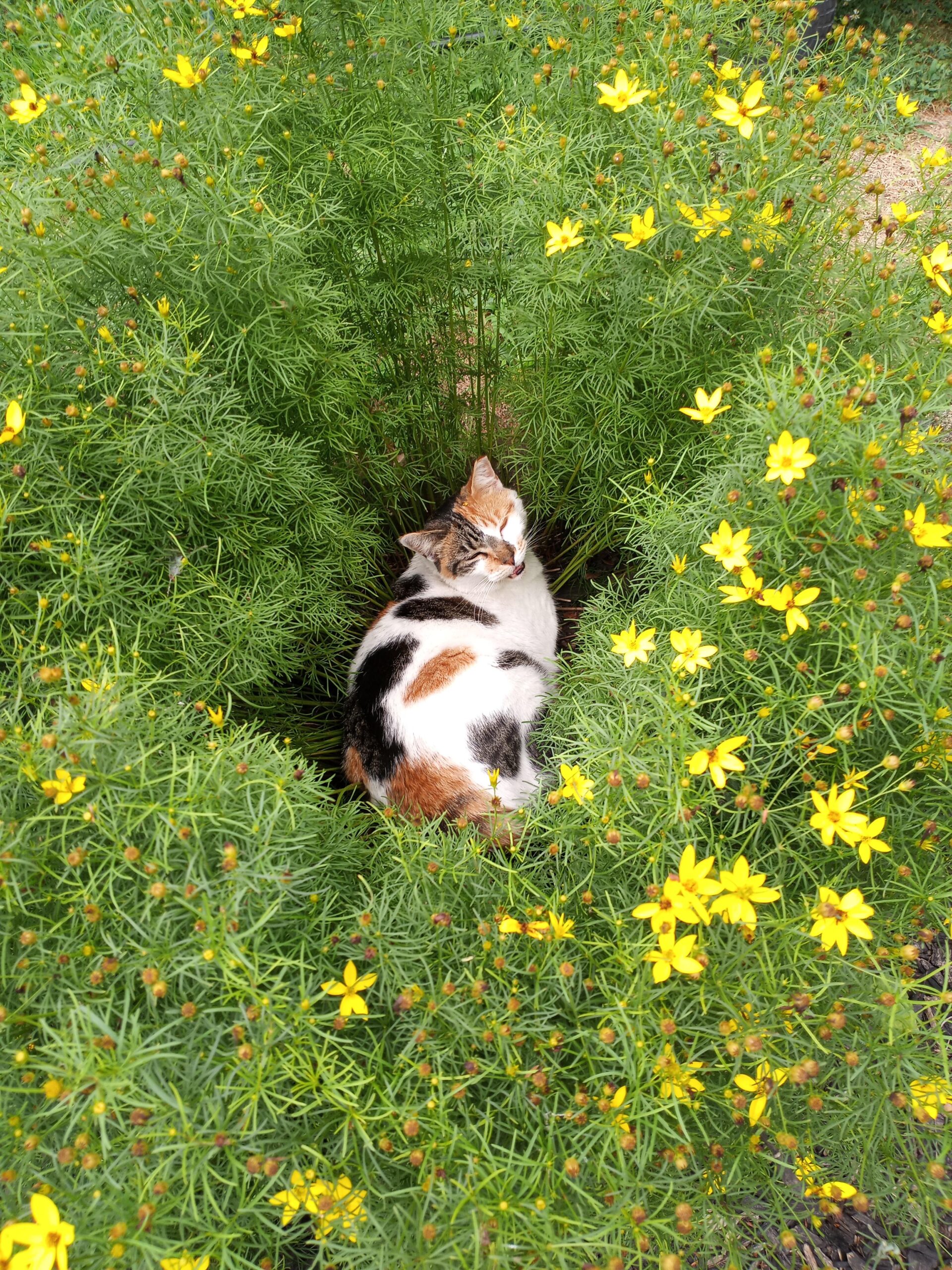Key Takeaways
Tickseed Coreopsis is generally non-toxic to dogs and cats, according to the ASPCA.
Coreopsis and Tickseed are often used interchangeably, but they refer to the same plant.
Although non-toxic, ingestion of large amounts may cause mild gastrointestinal upset in pets.
Proper garden layout and training can help prevent pets from eating plants.
Knowing the difference between toxic and non-toxic plants is crucial for pet safety.
Is Tickseed Coreopsis Toxic or Poisonous to Dogs & Cats in ASPCA
Introduction: Quick Facts About Coreopsis aka Tickseed
Coreopsis, commonly known as Tickseed, is a popular choice for gardeners due to its vibrant, daisy-like flowers and ease of care. With over 100 species, Coreopsis offers a variety of colors and shapes that can brighten any garden. But for pet owners, one question often arises: Is Tickseed Coreopsis safe for dogs and cats?
In this article, I’ll dive into the specifics of Coreopsis and its safety for pets, based on guidelines from the ASPCA and other reputable sources. Let’s get started.
Tickseed Coreopsis & Pet Safety
First things first, let’s clear up any confusion. Coreopsis and Tickseed are essentially the same plant. The term “Tickseed” comes from the appearance of the seeds, which resemble ticks. Despite the off-putting name, these plants are generally safe for pets.
According to the ASPCA, Tickseed Coreopsis is non-toxic to both dogs and cats. This is great news for pet owners who want to enjoy a colorful garden without worrying about their furry friends.
However, it’s important to note that while the plant itself isn’t toxic, any plant material can cause mild gastrointestinal upset if ingested in large amounts. Symptoms like vomiting and diarrhea can occur, but these are usually mild and temporary. For more information on pet-safe plants, you can read about pet-friendly sweet alyssum.
“Interesting growth in my Coreopsis. : r …” from www.reddit.com and used with no modifications.
Differences Between Coreopsis and Tickseed
Coreopsis: General Overview
Coreopsis, or Tickseed, belongs to the Asteraceae family and is native to North and South America. The plant is known for its bright, cheerful flowers that bloom from early summer to fall. Coreopsis can be annual or perennial, depending on the species, and it’s often used in borders, containers, and as cut flowers. For more information on pet-friendly plants, check out pet-friendly Sweet Alyssum.
Here’s a quick overview of Coreopsis:
Scientific Name: Coreopsis spp.
Common Names: Tickseed, Calliopsis
Family: Asteraceae
Native Range: North and South America
Flowering Season: Early summer to fall
Coreopsis & Tickseed: What’s the Difference?
As mentioned earlier, Coreopsis and Tickseed are names for the same plant. The term “Tickseed” is derived from the seeds’ resemblance to ticks. Despite this, the plant is widely appreciated for its ornamental value and ease of care.
Why the Confusion?
The confusion surrounding the safety of Coreopsis, or Tickseed, for pets stems from several factors. First, the sheer variety of species and hybrids can make it difficult to identify the plant correctly. Some gardeners may mistakenly think that all daisy-like flowers pose the same risks, but this isn’t the case. For instance, Lanceleaf Coreopsis is not toxic to cats.
Additionally, the name “Tickseed” might alarm pet owners due to its association with ticks, which are harmful parasites. However, this name only refers to the appearance of the seeds and has no bearing on the plant’s safety. Misconceptions can easily spread, leading to unnecessary worry.
Is Coreopsis Toxic to Pets?
Understanding the toxicity of plants is crucial for pet owners who want to keep their furry friends safe. The ASPCA provides guidelines on plant toxicity, helping pet owners make informed decisions about their gardens. According to their database, Coreopsis, including Tickseed, is non-toxic to both dogs and cats but ingesting large amounts may cause mild gastrointestinal upset.
This means that, in general, your pets can coexist with these plants without significant risk. However, it’s always wise to monitor your pets and ensure they don’t consume large amounts of any plant material. For more information on pet-safe plants, check out this article on pet-safe Angelonia.
ASPCA Guidelines on Plant Toxicity
The ASPCA’s guidelines on plant toxicity are a valuable resource for pet owners. They categorize plants into toxic and non-toxic lists based on their effects on dogs, cats, and other animals. Coreopsis, or Tickseed, falls into the non-toxic category, meaning it doesn’t contain harmful substances that could endanger your pets.
However, the ASPCA also notes that even non-toxic plants can cause mild gastrointestinal issues if ingested in large quantities. This is because pets’ digestive systems are not designed to process plant material. Therefore, while Coreopsis is safe, it’s still best to prevent your pets from eating it.
Non-Toxic Nature of Tickseed Coreopsis
Tickseed Coreopsis is known for its bright, cheerful flowers and its non-toxic nature. This makes it a popular choice for pet-friendly gardens. The plant’s non-toxic status means it doesn’t contain harmful chemicals that could poison your pets. For more information on pet-safe plants, check out pet-friendly Sweet Alyssum.
However, it’s essential to understand that “non-toxic” doesn’t mean “completely safe.” If your dog or cat consumes a large amount of Coreopsis, they may still experience mild symptoms like vomiting or diarrhea. These symptoms are usually temporary and resolve on their own, but it’s always a good idea to consult your vet if you’re concerned. For more information, you can read about other non-toxic plants that are safe for pets.
Potential Reactions in Pets
Even though Tickseed Coreopsis is non-toxic, your pets might still show some reactions if they eat the plant. These reactions are generally mild and not life-threatening, but it’s important to be aware of them so you can take appropriate action.
Dogs: Symptoms to Watch For
In dogs, consuming large amounts of Coreopsis can lead to mild gastrointestinal upset. Symptoms to watch for include:
Vomiting
Diarrhea
Loss of appetite
Lethargy
If you notice these symptoms, it’s best to monitor your dog closely. Most importantly, provide plenty of water and consult your vet if the symptoms persist or worsen.
Cats: Symptoms to Watch For
Cats may also experience mild gastrointestinal upset if they eat Coreopsis. Symptoms to watch for include:
Vomiting
Diarrhea
Drooling
Loss of appetite
Like with dogs, these symptoms are usually mild and temporary. However, if your cat shows severe symptoms or if you have any concerns, it’s always best to consult your vet.
How to Ensure Pet Safety Around Coreopsis
While Coreopsis is generally safe for pets, taking extra precautions can help ensure your furry friends stay healthy. Here are some tips to keep in mind:
Preventing Pet Access to Plants
Garden Layout Tips
One of the most effective ways to keep your pets safe is by designing your garden thoughtfully. Here are some tips:
Plant Coreopsis in areas that are less accessible to your pets.
Use barriers like fences or decorative borders to keep pets out of certain areas.
Consider using raised garden beds to make it harder for pets to reach the plants.
By creating a pet-friendly garden layout, you can enjoy your plants without worrying about your pets getting into trouble.
Commands and Distractions
Training your pets to avoid certain plants can be highly effective. Commands and distractions can play a crucial role in this training process. Here’s how you can do it: you can also ensure your garden is filled with pet-safe evergreen shrubs that are safe for your pets.
First, use clear and consistent commands. For example, when your pet approaches the Coreopsis, firmly say “No” or “Leave it.” Consistency is key, so make sure everyone in the household uses the same commands.
Second, offer distractions. If your pet seems interested in the plant, redirect their attention with a toy or a treat. This not only distracts them but also reinforces positive behavior.
Alternative Safe Plants
If you’re concerned about any potential risks, consider planting alternative, pet-safe plants in your garden. Here are a few options: Angelonia, sweet alyssum, and rosemary.
Marigolds: These bright, cheerful flowers are non-toxic to pets and can add a splash of color to your garden.
Snapdragons: Another pet-friendly option, snapdragons are known for their unique shape and vibrant colors.
Sunflowers: These tall, striking flowers are safe for pets and can create a stunning focal point in your garden.
By choosing pet-safe plants, you can enjoy a beautiful garden without worrying about your pets’ safety.
Conclusion: Safeguarding Your Pets
In conclusion, Tickseed Coreopsis is generally non-toxic to dogs and cats, according to the ASPCA. While it’s safe for pets, it’s still important to monitor their behavior and prevent them from ingesting large amounts of any plant material. By designing a pet-friendly garden, training your pets, and choosing alternative safe plants, you can create a beautiful and safe environment for your furry friends.
Frequently Asked Questions (FAQ)
To help you further, here are some frequently asked questions about Coreopsis and pet safety:
What should I do if my pet eats Tickseed Coreopsis?
If your pet eats Tickseed Coreopsis, monitor them closely for any signs of gastrointestinal upset, such as vomiting or diarrhea. These symptoms are usually mild and temporary. However, if the symptoms persist or worsen, consult your vet immediately.
Here’s a quick action plan:
Monitor your pet for symptoms.
Provide plenty of water.
Contact your vet if symptoms persist or worsen.
Are all species of Coreopsis safe for pets?
Yes, according to the ASPCA, all species of Coreopsis are generally considered non-toxic to pets. However, it’s always a good idea to verify the specific species and consult reliable sources to ensure their safety.
How can I tell if a plant is safe for my pet?
To determine if a plant is safe for your pet, refer to reliable sources like the ASPCA’s database of toxic and non-toxic plants. Additionally, consult your vet for personalized advice. When in doubt, it’s best to err on the side of caution and avoid plants with unknown toxicity.
Are there other common garden plants that are toxic to pets?
Yes, several common garden plants are toxic to pets. Some examples include:
Lilies: Extremely toxic to cats and can cause kidney failure.
Azaleas: Can cause vomiting, diarrhea, and even heart failure in severe cases.
Oleander: Highly toxic to both dogs and cats, affecting the heart and nervous system.
Always research plants before adding them to your garden to ensure they are safe for your pets. For example, Angelonia is not toxic to dogs and cats. By following these guidelines and staying informed, you can create a safe and beautiful garden for both you and your pets to enjoy. Remember, the key to pet safety is vigilance and proactive measures. Happy gardening!



